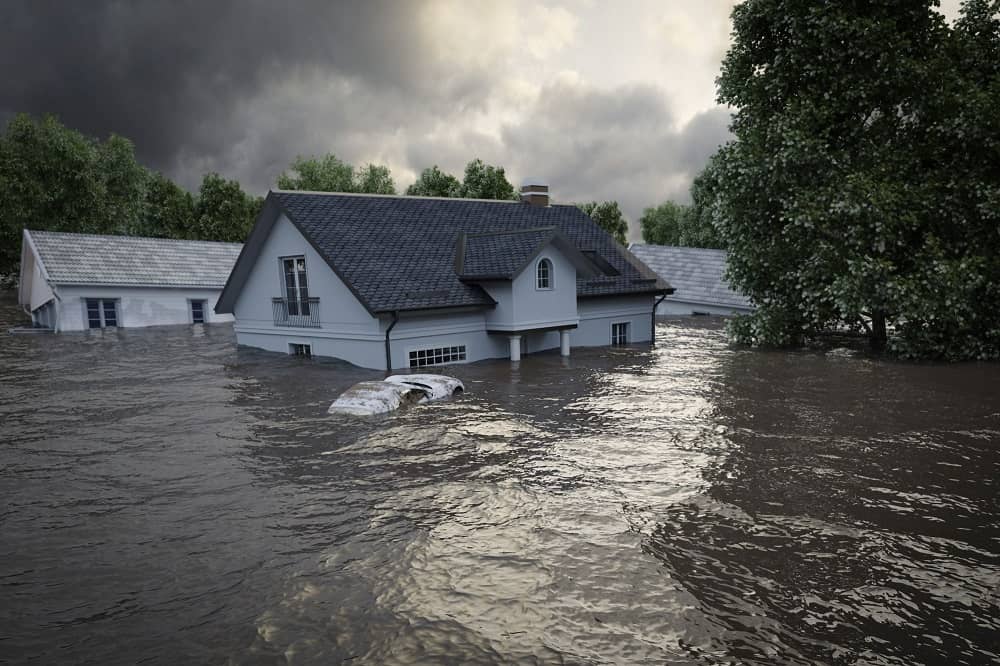Floods are Earth’s most common and destructive natural hazards. And for those living in areas subject to flooding, the effects can be devastating. Flooding can be chaotic– destroying home structures, damaging possessions, increasing risks of health issues from contaminated waters, and may cause deadly accidents due to downed power lines and gas leaks.
Figuring out what to do after a flood can seem daunting. However, focusing on critical steps allows you to make the right decisions, minimize damage, and quickly return to your normal life. This article shares the necessary steps to take after a devastating flood.
Always Think Safety
Flooding poses a safety risk to you and your family. As such, you want to ensure your and your family’s safety above all else. If it’s still raining, don’t try to do anything. Even if flood levels are low, risks are still present- anything from a stray sharp item to a collapsed structure to a downed power line can cause serious injuries.
More importantly, evacuate your home if you think staying there is unsafe for you and your family.
Call The Experts
Once the storm has passed and the flood water has receded, you can start assessing your home. However, waiting for local authorities’ advice before returning would be best if you evacuated to ensure safety.
In most cases, flood damage can be an overwhelming experience, so it’s recommended to call in the experts for the initial assessment. Professionals can inspect your home for possible structural damage and electrical issues caused by the flood. Calling an expert like Water Damage Specialist can also help get your home back to normal as quickly as possible. These providers have the knowledge, expertise, and necessary equipment to deal with all kinds of water damage, including floods.
Document Damages
Documenting the damage caused by the flood to your home is essential since you can use that as evidence when claiming insurance. With the help of professionals, you can inspect your property and do a comprehensive assessment, taking note of every damage you see.
Here are some of the potential damages you should watch out for:
- Leaks
- Dents on gutters and vents
- Moisture and water damage
- Broken doors and windows
- Missing or damaged furniture, appliances, and other personal belongings
- Missing, broken, or loose roof shingles
Aside from the report created by the professionals who inspected your home, ensure you get clear pictures and videos of these issues and others you find. Doing so can help strengthen your cases since you have additional proof of your house’s damage.
Contact Your Insurance Company
If you live in flood-prone areas, chances are you have flood coverage on your homeowners’ insurance. That said, you need to call your insurance provider as soon as possible to inform them that you’re affected by flooding. The sooner you file, the sooner you can get the money you’ll need to repair or restore your home.
Generally, your insurance agent will guide you through the steps to make a claim. And when making a report of the incident, discuss and explain the situation and any visible damage caused to your home. Once filed, they will send an adjuster to your property to assess the damage to your home and make a claim estimate. You can also show them the photos and videos you took earlier, especially if you had to throw out or dispose of items that pose a health risk, such as cushions, pillows, or perishable goods.
Start Water Extraction
Depending on the damage your home sustained, you can start extracting water from your home while you wait for the experts to arrive.
First off, open all doors and windows to ensure proper ventilation. You can also turn on fans and dehumidifiers to dry things out. Then, remove all items–wet and dry–from the area as much as possible. If there’s standing water, sweep it out of your home. You can also use a wet and dry shop vacuum to extract the water if there’s power in your home.
Once the water damage restoration company arrives, you can leave your home repair, remediation, and restoration to them.
Wrapping Up
Floods can result in devastating losses both financially and personally. For one, flood water can wreak havoc on your home’s structure and personal belongings and may also increase the risks of health complications.
And when flood waters recede, the damage left behind can be more stressful. Fortunately, homeowners can keep in mind and follow the above tips and steps to reduce the impact of flooding on their home and get it back to their pre-flood state in no time.


